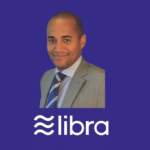
Joan Zerkovich, Senior Vice President, Operations at American Association of Insurance Services (AAIS) walks us through how AAIS have expanded their OpenIDL blockchain application beyond streamlining regulatory reporting for carriers. In this episode she explains to us how OpenIDL helps insurers develop a network data strategy that provides data standards and a secure, scalable and cost-effective platform for carriers.
What is blockchain?
Blockchain is a distributed ledger of which a copy of the ledger is available to all the participants of the network. Blockchain solves a key problem that other data technologies didn’t provide which was an immutable record. It provides a secure way to store data, transparency in how the data is being used and an immutable record that is so critical to trusting any activity that happens on the network.
It enables to create systems networks for a wide variety of solutions such as transactional networks or in the case of OpenIDL as an analytics platform.
What is the American Association of Insurance Services (AAIS)
In the United States, the insurance industry is regulated at the state level. A National Advisory organisation exists to provide consistency between all the state regulations. AAIS is formed by regulation and is licensed in all 50 states to do the following:
- Serve as a bridge between the carriers and the regulators in the way they exchange and share data
- Through that exchange the AAIS uses some of that data to create products such as a homeowner’s policy with a rating plan or an auto plan. AAIS brings consistency across all the states in the way those products are delivered to the market. Carriers pick up the AAIS products to add value on top of them.
AAIS has been doing this for over 80 years. They realise it isn’t as efficient as it should be and that it needed to be modernised due to the different data needs in the industry today.
The Open Insurance Data Link (OpenIDL)
In September 2018 we featured Joan Zerkovich on Insureblocks to tell us about the Insurance Regulatory Reporting using Blockchain – AAIS introduce openIDL.
Joan reminds us that her team didn’t know they were going to create OpenIDL when they started off on that journey. They knew that they had a problem in the way they were collecting data and sending reports over to the regulators. There were a lot of pain points in the participants in that process. The old-style statistical data plans that had been used for the last decades didn’t contain enough information the AAIS as an advisory organisation needed. The regulators also found that the stat plans didn’t have the necessary data for them to answer the questions they were getting from their legislators.
Consequently, the regulators would go around the advisory organisations by making data calls directly to the carriers to get the data they need. This caused a lot of pain points with the carriers who saw an increasing volume of data leaving the security of their data centres beings transferred to third parties without any oversight in how the data was being used.
Through a number of design thinking sessions AAIS was able to identify those pain points and look into possible solutions. The available data technology platforms had a number of problems in terms of data security, transparency of how the data was being used and of course as a regulated industry the need for an auditable and immutable record was required.
This lead Joan and her team to the use of blockchain technology. They started off with a prototype that solved the problems for both the carriers and the regulators. They went through one pivot in their architecture, changed what’s stored on chain and how to ensure the privacy of data.
Today the OpenIDL is an open blockchain network that streamlines regulatory reporting and provides new insights for insurers, while enhancing timeliness, accuracy, and value for regulators. OpenIDL is the first open blockchain platform that enables the efficient, secure, and permissioned-based collection and sharing of statistical data.
Impact OpenIDL has had
The impact has first been on how it has changed the relationship between the carriers and the regulators and how they think about using data for the benefits of the entire industry. In the past it was a kind of contentious relationship that lacked trust. The first thing OpenIDL brought into the community was that sense of trust.
A win-win exchange of data was established with OpenIDL between the carriers and the regulators. Carriers provide regulators with data on for example cause of loss for fire or some sort of catastrophe for regulators to make good policies.
AAIS would create reports on a state-wide or national basis that allows regulators to understand what a cause of loss for fire might be. The carriers can see the report at a state or national level and compare it against the data they have internally and make decisions at the same time.
Regulators have received OpenIDL with such excitement that they’ve built a coalition of regulators to change the laws about how regulatory reporting occurs to make use of the OpenIDL blockchain platform as the new standard for the future.
Carriers are also excited about OpenIDL as they’ve seen the value in regulatory reporting and in the new data stores that are available through the blockchain network and how that might be used for other purposes than just regulatory reporting.
Carriers saw how the platform could be used to collaborate externally with catastrophe risk modelling companies and internally within their own organisation where there are numerous identities.
Key learnings
The first key learning was that technology was not a barrier. Having IBM as a partner for their Hyperledger Fabric implementation helped develop a solution to their problem. The second learning was how difficult it was in building the network. There were a number of factors to that:
- They believed that if AAIS provided a solid solution it would be well understood and easily adopted by anybody who saw it. While there’s been a lot of interest, there was some scepticism about the technology, its long term feasibility and the total cost of ownership of that solution
- Building a coalition of competitors who have to come together to use the platform, to invest in, to trust in, and to build over time
The key to overcoming those problems was in building relationships with each of the companies, gaining their trust and allowing them to take the time they need to understand how this technology will transform their internal and external operations.
OpenIDL’s governance structure
OpenIDL’s governance structure is patterned after what they see as the most successful infrastructure activities ever which is the building of the internet and the open source software movement.
AAIS understand that what they were building was a platform that needed to be adopted widely and used by the smallest insurance carriers as well as the largest. Joan and her team borrowed a page from the Linux Foundation by having a technical oversight to create open protocols and open standards to ensure that this network is running at a certain level, but it allows a lot of creativity and new applications to develop on top of that infrastructure.
With the support of the Linux Foundation legal team, AAIS established OpenIDL as a not for profit 501(c)(6) and a governance structure that is patterned very closely after the Linux Foundation. They have a technical Governance Committee and under that a regulatory reporting committee for all the traditional applications such as regulatory reporting and stat reporting. An application governance group that is comprised of numerous workgroups in a similar manner to the IETF (Internet Engineering Task Force). Each of those working groups are here to solving a problem, they create code, documentation, standards and proof that it would work on the OpenIDL blockchain network. That is brought forward to the technical Governance Committee for it to become a production application.
Data governance plays an important role in the overall governance of the AAIS.
OpenIDl has a data governance committee that works not only with all of their application groups but with external bodies to bring their standards into their environment. To provide those connection points where policy and claims data can be joined with other data for example the auto community or IoT community.
Flood modelling on top of OpenIDL
Fundamental to OpenIDL’s architecture is the idea of a private data store which they call the harmonised data store. It has the ability to publish a “thumbprint” of what’s in that data store. The thumbprint is what is stored on chain.
Once you know what data is available on the network you can build all sorts of reports and applications on top of the network.
An example of such applications is a flood modelling application which was built by a catastrophe modelling company. Similar to AAIS own private data store around regulatory reporting, the company built a catastrophe modelling data store and linked it to the blockchain through OpenIDL’s data governance link.
To further drive this initiative the company built its own working group and started defining open data standards.
OpenIDL provides the key infrastructure for commercial entities to build all sorts of solutions that they can grow without charging them a fee for utilising the network.
OpenIDL in a box
OpenIDL in a box is a complete package that any member can start up quickly and begin using right away. The OpenIDL in a box technology is all open source and runs in any cloud provider. Any member can open up an OpenIDL node and load data into the harmonised data store and produce a report in about four hours. If a carrier isn’t ready to invest in a OpenIDL node there is a multi-tenant node for them to put their data into and participate in the network.
Network data strategy
Organisations have two types of data strategies. Internal and external. Internal data strategy has well understood data, it’s highly controlled and there are lots of applications in terms of understanding the business from a reporting standpoint.
External data strategy involves working with numerous partners for acquiring external data sources. These are usually one off unique data connection strategies where the following is agreed: terms for working together, how the information will be exchanged, and how the exchange will be secured on the internet.
With OpenIDL there is the opportunity for a network data strategy to sit on top of the network. OpenIDL has a network of numerous participants that operate with well defined harmonised data stores, data standards, access to available data for exchange within a very secure platform. Members can have a number of business relationships on top of that network and exchange data, use it, trust it and understand where the data has been used within an immutable record.
OpenIDL’s data governance group facilitates the connection of other standards, bodies and producers of data that helps to evolve the network data strategy.
Working groups – mini incubators
OpenIDL’s secure platform for exchange data within a growing network of players is an ideal location for companies wishing to build new solutions. Working groups act in some way as mini incubators for new business solutions. That’s where new data standards and processes can be built on top of the network. The flood working group for example is building an analytic platform and a reporting platform that is taking data from regulatory reporting coupled with data from catastrophe risk models and other government sources of data.
Once that analytics environment is established it will attract carriers and reinsurers to start developing new applications that will rely upon the analytics.
Cross industry blockchain consortium collaborations
AAIS is a member of the MOBI consortium. On the 8th of March 2020, Chris Ballinger, CEO of MOBI featured on Insureblocks – “Introduction to the Mobility Open Blockchain Initiative (MOBI)”.
AAIS participates in the MOBI consortium because of their work within the auto industry with auto policies. They have similar work with the IoT community. Joan believes that each blockchain network will focus on a key set of data and expertise and the opportunities lies in connecting them together and allow the markets and interest of the participants to drive new solutions.
Plans for the future
OpenIDL’s plan for 2020 is to continue building out the network and testing scalability. New working groups will be building new applications on top of the network within a fully exercised governance model. Once there is a growing number of new applications developed onto the network there will be the need to address the operational aspects in terms of capacity of the network.
They’re also working with the regulators to move forward with establishing the network as a trusted and acceptable reporting mechanism for the regulators.
Due to how OpenIDL was architectured, there is an opportunity for international members to use the platform for their network data strategy outside of the United States.







